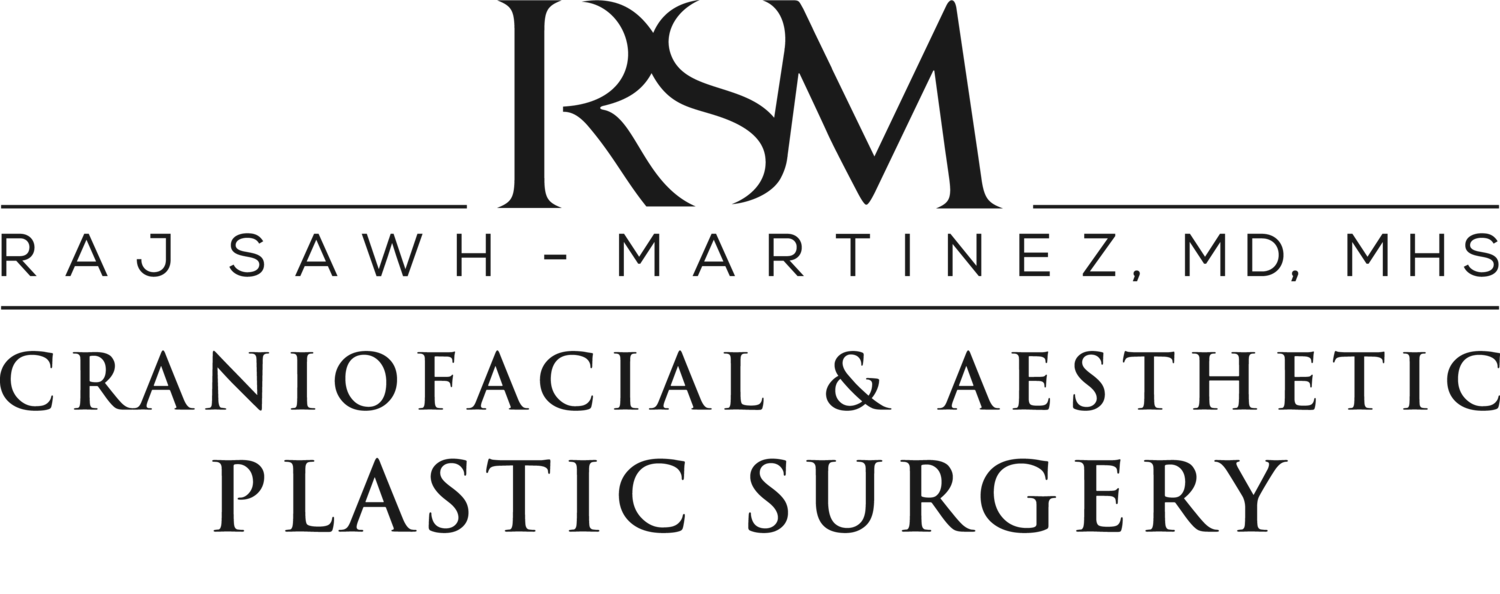
Head Shape Concerns
Orlando, FL
The head of a newborn baby is very soft and malleable, allowing the baby to pass without complication through the birth canal. The newborn skull contains several plates of bone that grow together as the baby ages.
Occasionally, the bones fuse together too early or abnormally, leading to head shape concerns and the potential for restricted brain growth. Fellowship-trained craniofacial surgeon Dr. Raj Sawh-Martinez has successfully treated various head shape concerns to deliver outstanding outcomes.
His practice, Craniofacial & Aesthetic Plastic Surgery, in Orlando, FL, treats the three most common causes of misshapen skulls in pediatric patients and is equipped to create a tailored treatment plan for patients who are affected.
Different types of Head Shape Issues
Plagiocephaly
Plagiocephaly is a very common and treatable head-shape disorder. This condition causes an infant’s head to appear flattened. Most commonly, plagiocephaly is caused by prolonged pressure to one part of the head. Many infants develop the condition from sleeping in the same position each day and night. This is the most common in premature babies. Treatments for this specific head-shape concern include special exercises, varying sleep positions, and/or wearing a corrective headband or molding cup. Your pediatrician may recommend a visit to our facility to ensure that your baby is not suffering from craniosynostosis, a more serious condition that requires surgical repair.
Craniosynostosis
Craniosynostosis is a birth defect that occurs when one or more joints in a baby’s skull fuse together before his or her brain is finished developing. As brain growth continues, the head will become misshapen. The condition typically involves just one portion of the skull but can affect more, in which case, it is considered complex craniosynostosis. In some rare cases, the condition is caused by certain genetic syndromes (syndromic craniosynostosis). The treatment for this head-shape concern is surgery to correct the shape of the head and to allow for normal brain growth. Although brain damage can occur in severe cases, early diagnosis and treatment often yield outstanding results, cognitive normalcy, and an unaffected appearance.
Syndromic Craniosynostosis
A syndromic craniosynostosis diagnosis is only given when the head-shape concern has a clear genetic cause. Syndromic head-shape concerns typically have other associated abnormalities and commonly involve multiple complications. Patients with this condition often have health and developmental issues, such as sleep apnea, hydrocephalus, and eye issues. Hearing loss and dental problems can also accompany syndromic craniosynostosis. The specific treatment approach for this condition depends on the extent of the abnormalities, but in most cases, multiple surgeries are required. Surgical treatment is highly customized in these cases and will be performed by Dr. Sawh-Martinez in conjunction with a team of additional craniofacial specialists.
Head Shape Surgery Candidates
Head-shape concerns may be discovered while the child is still in the womb or immediately after birth. Doctors may recommend surgery right away or request a series of tests to determine the severity of the conditions.
If it is determined that the child is suffering from pressure on the brain because of their head-shape condition, surgery will need to be performed as soon as possible. Symptoms of increased intracranial pressure include:
Visual impairment
A bulging fontanelle (soft spot)
Lethargy
Noticeable scalp veins
Poor feeding
Vomiting
Seizures
Bulging eyes or inability to look upward
Developmental delay
Head Shape Surgical Technique
The primary goal of surgery for cases of craniosynostosis is to increase the size of the skull to reduce pressure on the brain. This surgery will also create a normal head shape. The surgical technique is often referred to as “cranial vault remodeling.”
Research has shown that the skull does not grow normally in the affected region following surgery so an overcorrection will be made to allow for a normal appearance as the child develops. Dr. Sawh-Martinez and a pediatric neurosurgeon will work together during this procedure with each specialist performing the portion of the surgery they most excel in. This also reduces the amount of time the child will need to be under anesthesia.
What to Expect Prior to and After Head Shape Surgery
Rest assured that your child will be safely and comfortably asleep before Dr. Sawh-Martinez begins anything that could cause pain. The child will be placed under anesthesia via gas mask before IV sedation is placed for further pain control. Prior to surgery, the nursing staff will take great care to secure all monitoring equipment, ensuring that the child is safe throughout the procedure.
The surgery could take three or more hours and will involve the shaving of the child’s head. Incisions are made in inconspicuous patterns that allow for concealing beneath a short haircut. After the operation is finished, the child will be taken to the pediatric intensive care for close monitoring and care.
Your hospital stay could last up to four days. During your stay, the nursing staff will teach you how to carefully wash the baby’s hair to help expedite the healing process. Dr. Sawh-Martinez will schedule follow-up appointments at about three weeks post-operation.
Caring for Craniosynostosis
Treating head-shape concerns in infants is a highly sensitive job. Only the best surgeons in the world can combine artistic surgical skills and supreme compassion to confidently care for infants with complex conditions. Dr. Sawh-Martinez is passionate about helping restore function and future happiness to children suffering from a variety of head-shape concerns. If your child was born with craniosynostosis or you suspect that to be the case, schedule your consultation with our skilled craniofacial plastic surgeon at our Orlando, FL facility today.
